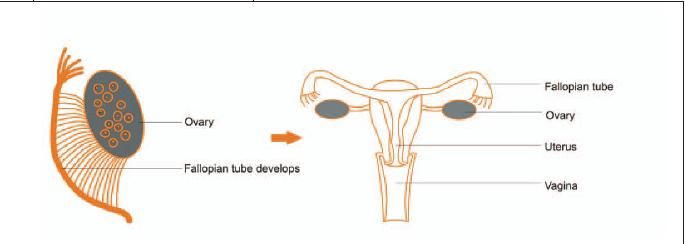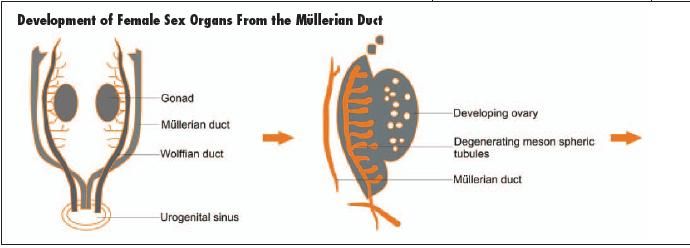Müllerian Duct Remnant
In addition to syringohydromelia and meningocele, the MRI of the spine showed a fluid-filled mllerian duct remnant that extended from the base of the bladder to the posterior superior aspect of the prostate gland. The margins of the fluid collection in the remnant are smoothly bound by a hypointense structure that represents a discrete tissue wall. A mllerian duct remnant can be confused with free fluid in the cul-de-sac posterior to the bladder.

Figure

Figure

FigureDuring an MRI evaluation for interval changes in syringomyelia in a 6-year-old boy, the incidental finding of a mllerian duct remnant was made. The child also had a history of spina bifida, meningocele, and ventriculoperitoneal shunt placement.
In addition to syringohydromelia and meningocele, the MRI of the spine showed a fluid-filled mllerian duct remnant that extended from the base of the bladder to the posterior superior aspect of the prostate gland. The margins of the fluid collection in the remnant are smoothly bound by a hypointense structure that represents a discrete tissue wall. A mllerian duct remnant can be confused with free fluid in the cul-de-sac posterior to the bladder.
The mllerian duct in female neonates develops into the fallopian tubes, uterus, and upper part of the vagina (as shown in the diagram).1 In male neonates, the mllerian duct normally degenerates as a result of the presence of anti-mllerian hormone (AMH). The mllerian duct may remain because of the absence of this hormone or the presence of a mutation in the AMH receptor. This remnant can enlarge as a result of fluid collection and become cystic. This type of remnant is asymptomatic in most cases, as in this patient.
The incomplete masculinization of the urogenital sinus leads to development of a midline prostatic cystic lesion, also considered a mllerian duct remnant. This condition is usually associated with hypospadias and intersex disorders. Some authors believe that urticular cyst or cystic utricle is a more accurate term than prostatic cystic remnant.2,3
There is a 3% incidence of malignancy in mllerian duct cysts, most commonly in the fourth decade.2 Surgical removal is considered the best form of treatment.3
References:
- Sadler TW. Langman's Medical Embryology. 10th ed. Baltimore: Lippincott Williams & Wilkins; 2006:chap 8.
- Levin TL, Han B, Little BP. Congenital anomalies of the male urethra. Pediatr Radiol. 2007;37:851-862.
- Luo JH, Chen W, Sun JJ, et al. Laparoscopic management of müllerian duct remnants: four case reports and review of the literature. J Androl. 2008 Jul 3 [Epub ahead of print].
Recognize & Refer: Hemangiomas in pediatrics
July 17th 2019Contemporary Pediatrics sits down exclusively with Sheila Fallon Friedlander, MD, a professor dermatology and pediatrics, to discuss the one key condition for which she believes community pediatricians should be especially aware-hemangiomas.